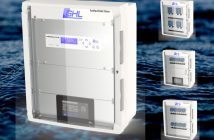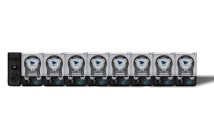Last week I discussed about budgeting for your aquarium and having a good idea about what sort of livestock one would plan on keeping in their reef aquarium in Anatomy of a Saltwater Reef Aquarium – Part 1, and this week I would like to discuss tank selection.
Believe it or not, selecting the right aquarium is actually very crucial to being able to enjoy the hobby. There are tons of options out there and picking the right tank is not always easy. Tank shape, size, and even material all need to be considered when making your selection.
Before you buy your aquarium, you must first choose what the aquarium is to be made of. Aquariums are typically made of glass or acrylic, but with so many options showing up around every corner, the clearest choice gets harder to make. Some people even make “plywood” tanks, which are just huge tanks made of fiberglass and/or epoxy coated plywood. But for now, I’ll just go into the glass vs acrylic debate. We’ll be developing a “Plywood Aquarium” article soon.

Acrylic Nano Reef Aquarium
Glass aquariums are the most popular, and for good reason. They come in a variety of shapes and sizes, don’t scratch that easily, and have been around for decades (making them extremely common). But there are a couple of issues to consider when thinking about glass tanks. For one, glass aquariums can be extremely heavy when compared to their acrylic counterpart. A 90 gallon glass aquarium, for example, can weigh over 100 lbs all by itself. It doesn’t seem like a lot, but climbing up a flight of narrow stairs or trying to open a door will make you think differently. Custom glass tank are even worse. I have a 180 gallon tank with extra thick 5/8″ glass. It takes four people just to move the beast. There’s no clue as to how much it really weighs, but our backs would scream that it’s too much! Another drawback to glass tanks is the inability to remove scratches. They don’t scratch very easily, but when a scratch does occur, there’s pretty much nothing you can do about it. Acrylic on the other hand can have scratches buffed out, but I’ll discuss more on in a bit. Glass also shatters. If you ever hit a door knob or bump into something the tank will likely crack and eventually shatter. This obviously puts your aquarium livestock and floor in jeopardy. Lastly, glass aquariums gain and lose heat very quickly. Glass has a tendency of heating up or cooling off rapidly. This is bad for a reef aquarium because stability is a key factor that determines success. If temperatures fluctuate too violently, the livestock can become stressed out and health issues may come up. Despite these minor drawbacks, glass aquariums are the top choice and surely my preferred aquarium type.
Acrylic tanks are drastically different than glass aquariums. Acrylic is a form of plastic that can be cut into any shape with ease. You can get a variety of interesting shapes and sizes with an acrylic tank that would be unthinkable with a glass tank. For example, acrylic can be bent into cylinders or other odd shapes and still be viable for an aquarium. Glass can be bent to some extent, but acrylic is the way to go for oddly shaped aquariums. Acrylic is also very light when compared to glass (depending on their relative thicknesses). This makes moving acrylic aquariums easier to do, although the shape and size of the tank can still make it awkward. Also unlike glass, acrylic aquariums aren’t held together by silicone. A product called Weld-On is used to basically melt two edges together to make an unbreakable seam (if done properly). This of course is very ideal when you’re housing potentially hundreds of gallons of water. Acrylic aquariums also resist temperature change better than glass aquariums. The tank heats up or cools down less quickly, making for a potentially more stable environment. But despite these clear advantages, acrylic tanks have some nasty drawbacks. For starters, they scratch very easily. A grain of sand or the slightest brushing up against the aquarium can lead to unsightly scratches. They can be buffed out, but really only if the scratch is on the outside of the tank. Scratches on the inside can’t be handled due to the chemical abrasive used in the scratch removal process. Another drawback is bowing. If an aquarium is made of acrylic and the material is too thin (or not properly braced), then the walls will bow and bend drastically. If this persists for too long, it could lead to structural failure of the tank. Finally, acrylic is expensive. This is probably the biggest turn off more most aquarists. An acrylic tank can easily be double or even triple the cost of a similar glass tank.






Pingback: Anatomy of a Reef Aquarium - Part 3 | AquaNerd()
Pingback: Anatomy of a Reef Aquarium - Part 4 | AquaNerd()